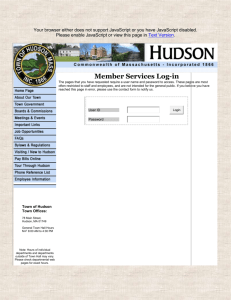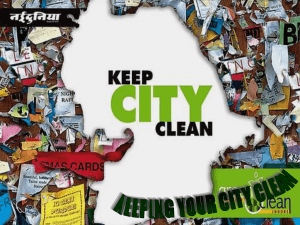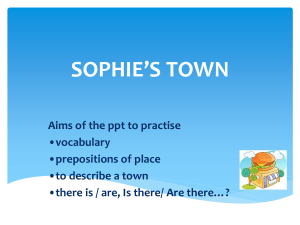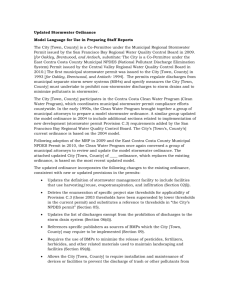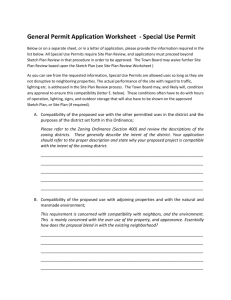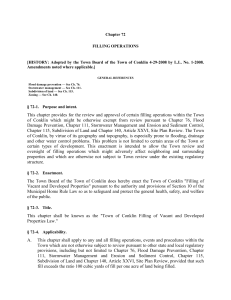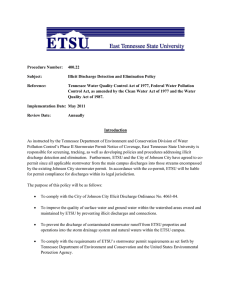March 30, 2009 Workshop
advertisement
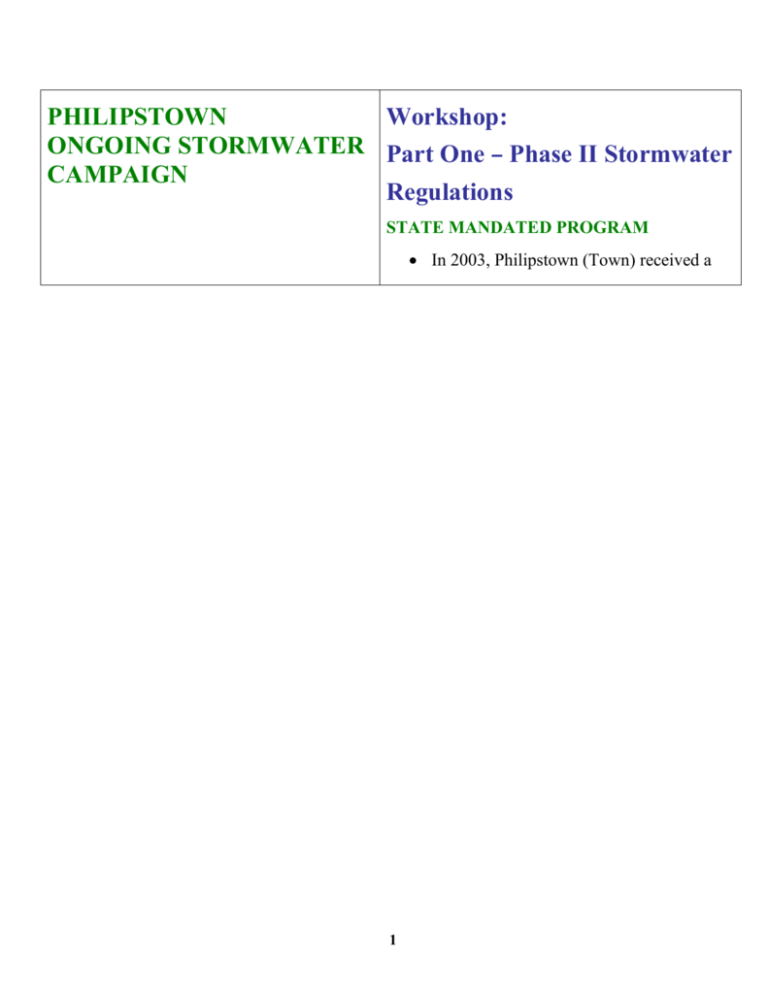
PHILIPSTOWN Workshop: ONGOING STORMWATER Part One – Phase II Stormwater CAMPAIGN Regulations STATE MANDATED PROGRAM In 2003, Philipstown (Town) received a 1 YEAR 6 SWMP: WORKSHOP FOR O & M STAFF AT THE HIGHWAY DEPARTMENT AND THE RECREATION DEPARTMENT PART 1- STORMWATER REGULATIONS PART II – ILLICIT DISCHARGE DETECTION AND ELIMINATION (IDDE) FOR MORE INFORMATION ON THE DATES AND TIMES OF THESE WORKSHOPS, PLEASE CONTACT: Roger Chirico at 845-265-3530 (Highway Dept.) Amber Stickle at 845-424-4618 (Recreation Dept.) Workshop: Part Two – Illicit Discharge five-year permit from the New York State Department of Environmental Conservation (NYSDEC), authorizing the discharge of stormwater runoff from the Town into adjacent Waters of the United States (public waters) The first five-year term permit required the Town to initiate and implement a public education and public participation program on the control of pollution from storm water runoff The permit also required the Town to prepare storm sewer maps of the urbanized areas of the Town and to conduct a field survey of illicit discharges (nonstormwater discharges) in these areas Part of the program included a pollution prevention staff training program for the Town’s stormwater-related operations In the first five years, the Town was also required to adopt local laws to address pollution from construction-related activities and illicit discharges The first five-year term permit ended on January 8, 2008 The second two-year permit started on May 1, 2008 and ends on April 30, 2010 3. CONSTRUCTION ACTIVITY Under current local laws adopted by the Town, New York State permit coverage is required of Detection and Elimination all construction activities involving a land disturbance of one acre or more in the Town, by: (IDDE) Filing an NOI with DEC before starting 1. TOWN OPERATIONS Preparing a SWPPP The Town’s operations that may include illicit Implementing the SWPPP during construction discharges (non-stormwater discharges) 2 Inspecting construction sites include: Maintaining post-construction practices 3




